WATCH THE WATER ??

WATCH THE WATER - VIDEOS
duckduckgo query: watch the water
https://duckduckgo.com/?q=watch+the+water&t=h_&ia=web
FULL MOVIE
https://forbiddenknowledgetv.net/watch-the-water-full-movie/
STEW PETERS SHOW - TAKING THE SERPENT'S
HEAD OFF
STEW PETERS INTERVIEW: DR. BRYAN ARDIS
https://earthnewspaper.com/2022/04/13/watch-the-water-stew-peters-interviews-dr-bryan-ardis-5659/
STEW PETERS INTERVIEWS DR. ARDIS
STEW PETERS & DR BRYAN ARDIS UPDATE ON THE WATCH THE WATER VIDEO
HRR INTERVIEW: DR. BRYAN ARDIS
https://proyectoveritas.net/hrr-interview-with-dr-bryan-ardis-part-12-3/
The Indian cobra reference genome and transcriptome enables comprehensive identification of venom toxins
https://pubmed.ncbi.nlm.nih.gov/31907489/
Bing Liu: Chinese-born professor dies in US murder-suicide
https://www.bbc.com/news/world-us-canada-52568716
PLANDEMIC II: INDOCTORNATION
https://forbiddenknowledgetv.net/plandemic-ii-indoctornation/
THE ANTI-V COLLECTION: DR. BRYAN ARDIS
https://thedrardisshow.com/the-anti-v-collection-ardislabs
DR. ARDIS BOMBSHELL
This is Biblical – Dr. Bryan Ardis Walks You Through His Months Long Journey to Corroborate his Covid-19 Snake Venom Theory. A Must Watch
Dr. Bryan Ardis’ Interview on Origins of COVID
https://peopletopeople.tv/2022/04/12/100003529/
Dr Bryan Ardis: Pope Francis & The Roman Catholic Church Are Behind COVID & The Shots (Video)

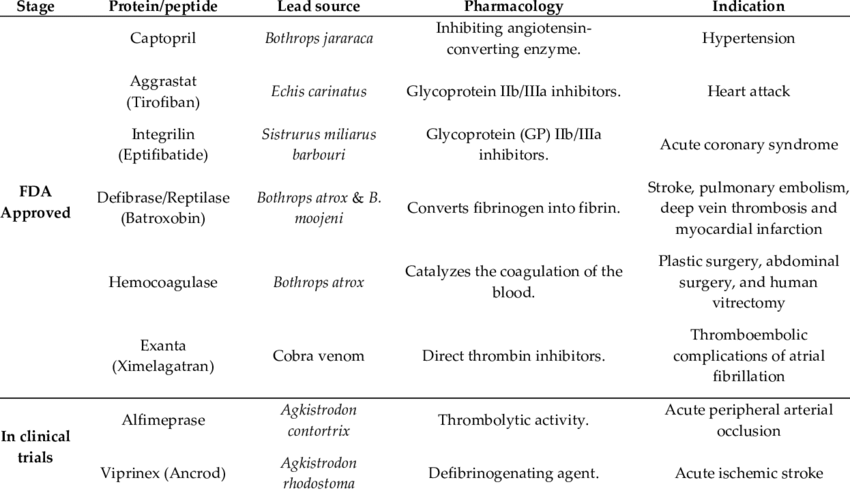

duckduckgo - query : watch the water
https://duckduckgo.com/?q=watch+the+water&t=h_&ia=web
SUMMARY: a written summary is in progress



SNAKE VENOM USED IN MEDICATIONS
duckduckgo query: snake venom medications
https://duckduckgo.com/?q=snake+venom+medications&t=h_&ia=web
Snake Venoms in Drug Discovery: Valuable Therapeutic Tools for Life Saving
https://www.ncbi.nlm.nih.gov/pmc/articles/PMC6832721/
These 16 pharmaceutical drugs are made from animal venom
What Blood Pressure Medicine Is Made From Snake Venom?
Snake Venom and COVID-19
https://www.truthforhealth.org/2022/04/snake-venom-and-covid-19/
These life-saving drugs are made from deadly venom World Economic Forum
https://www.weforum.org/agenda/2018/11/venomics-deadly-toxins-life-saving-drugs-mande-holford/
The Snake Venom Hypothesis of Covid – Dr. Bryan Ardis [VIDEO]
https://www.europereloaded.com/the-snake-venom-hypothesis-of-covid-dr-bryan-ardis-video/
Venomtech announces new drug development collaboration with Charles River
https://plasmaenergysolution.com/?p=12421
also see
BrighteonSituation Update, April 13, 2022 - "VenomTech" company announces massive library of SNAKE VENOM peptides for pharmaceutical deployment
https://www.brighteon.com/88a49a34-64b0-4a90-89ff-8c148b11e323
Dr. Bryan Ardis releases huge allegations: The covid-19 virus, vaccines and some treatments are all derived from SNAKE VENOM
Search for a Snakebite Drug Might Lead to a COVID Treatment, Too
https://www.thelundreport.org/content/search-snakebite-drug-might-lead-covid-treatment-too
FACT: The FDA has approved numerous drugs derived from VENOM, including from snakes
The next generation of venom based drugs
https://wchh.onlinelibrary.wiley.com/doi/10.1002/psb.1837
COBRA VENOM USED IN MEDICATIONS
duckduckgo query : cobra venom medications
https://duckduckgo.com/?q=cobra+venom+medications&t=h_&ia=web
Medicinal Uses of Snake Venom
https://www.slideshare.net/saisravanthiparuchur/medicinal-uses-of-snake-venom
COBRA VENOM 19 ?
https://nofakenews.net/2022/04/12/cobra-venom-19/
Cobra venom: A review of the old alternative to opiate analgesics
https://pubmed.ncbi.nlm.nih.gov/21614945/
Cancer drugs derived from snake venom
https://cairnsnews.org/2022/04/14/cancer-drugs-derived-from-snake-venom/
Cobra Venom Pain Relief, Snake Venom Pain Reliever Neuropeptides | Nyloxin
How Cobra Venom, Nyloxin's Active Ingredient, Works to Relieve Pain
https://nyloxin.com/pages/cobra-venom
Advanced Biosensor-based Strategy for Specific and Rapid Detection of Snake Venom for Better Treatment
https://www.xiahepublishing.com/2472-0712/ArticleFullText.aspx?sid=2&id=10.14218%2FERHM.2018.00008
The biosensor is a tiny analytical device, capable of converting biological information into a detectable signal. As such, the device is able to determine the concentration of substances and other parameters of biological interest. This noninvasive technique is highly advantageous for its high accurately and sensitivity.In modern-day medicine, the biosensor is widely used, for various applications, to determine a broad range of factors, such as blood glucose, cholesterol, catechol and bilirubin, etc.1Examples include the amperometric biosensor PDMS/glass capillary electrophoresis biosensor microchip developed by Schoning et al. for the detection of catechol and dopamine, the biosensors employed in forensic science for the detection of DNA, and the microbial biosensors utilized for the detection of pathogenic microorganisms.
Most significantly, any biosensor is very specific and accurate, and requires the smallest amount of analyte for detection. Basically, the device is comprised of sensing material (bioreceptor), a transducer and a detector. The receptor may be an enzyme, antibody, microorganism or a cell, which senses the presence of the desired substance in the analyte, resulting in a chemical, physical or electrical change in the transducer. The transduced signal is then subjected to amplification and subsequent display by the detector of the analyte in a quantified manner.
Biosensors have been used as an integrated part of many systems for regular monitoring, primarily in food processing to determine quality and safety. Various sensors are well designated for different kinds of applications, like E. coli detection in vegetables by the detection of change in pH, enzymatic detection of aging of beer,and contamination of food.
Engineered Nanoparticles Designed To Effectively Treat Snakebites | Evolving Science
Nanoparticles: A Potential Cure for Snakebites
https://www.evolving-science.com/matter-energy/treat-snakebites-00821
The study, led by Kenneth Shea, described a method by which engineered nanoparticles (NPs) can sequester and bind to the toxin molecules present in snake venom, and stop or, at least, nullify its harmful effects. Specifically, the small abiotic hydrogel particles were made to interact with the phospholipases A2 (PLA2) and the three-finger toxin (3FTX) molecules present in elapid snake venom that was used for the research. ---
Bioactive Molecules Derived from Snake Venoms with Therapeutic Potential for the Treatment of Thrombo-Cardiovascular Disorders Associated with COVID-19
https://www.ncbi.nlm.nih.gov/pmc/articles/PMC8427918/
Usefulness of Snake Venoms and Their Components in the Management of COVID-19 Pathogenesis
Despite the newly developed vaccines against COVID-19, it is important to find additional solutions to fight against infection with SARS-CoV-2. Snake venoms and their components could be a promising alternative given their variety. These components remain highly relevant for use as experimental tools to elucidate several physiological mechanisms given their selective modes of action. In addition, snake venom derived-compounds can serve as good drugs for developing new biotherapeutics and diagnostics with relevant biomedical applications for many human diseases. Such isolated snake venoms-derived compounds have long been known to possess medicinal and pharmacological properties. Many of them could be used as antithrombotic, antiplatelet, antibacterial, antifungal, antiparasitic, anti-inflammatory drugs, and interestingly, as potential antiviral against several viral diseases . Some of these therapeutic applications inherent to compounds derived from snake venoms will be described throughout this review; a particular attention will be given to antithrombotic compounds in relation to SARS-CoV-2 coagulopathy.
Pharmaceutical startup uses cobra venom as anti-inflammatory
Drug made from cobra venom among pharma startup’s targeted therapeutics
An early stage pharmaceutical company with newly licensed anticancer, anti-inflammatory and nanoparticle drug-delivery technologies is […]
Pono’s third technology is a hybrid nanocarrier drug-delivery system that could target drugs directly to infected cancer cells. It’s been found to be especially effective in overcoming drug resistivity in diseases of neuroectodermal origin, the company says.
Nanocarriers, or nanoparticles, have become a popular approach for drug delivery in recent years and will account for nearly half of the forecast $136 billion nanotechnology-enabled drug-delivery market by 2021 ---
The Deadliest Healer: King Cobra Venom Used in a High-Strength Painkiller
https://curioussciencewriters.org/articles/2013/09/29/the-deadliest-healer/
Therapeutic Potential of Peptides Derived from Animal Venoms: Current Views and Emerging Drugs for Diabetes
https://www.ncbi.nlm.nih.gov/pmc/articles/PMC8491154/
The therapeutic potential of venom-derived drugs is evident today. Currently, several significant drugs are FDA approved for human use that descend directly from animal venom products, with others having undergone, or progressing through, clinical trials. In addition, there is growing awareness of the important cosmeceutical application of venom-derived products. The success of venom-derived compounds is linked to their increased bioactivity, specificity and stability when compared to synthetically engineered compounds. This review highlights advancements in venom-derived compounds for the treatment of diabetes and related disorders. Exendin-4, originating from the saliva of Gila monster lizard, represents proof-of-concept for this drug discovery pathway in diabetes. More recent evidence emphasises the potential of venom-derived compounds from bees, cone snails, sea anemones, scorpions, snakes and spiders to effectively manage glycaemic control. Such compounds could represent exciting exploitable scaffolds for future drug discovery in diabetes, as well as providing tools to allow for a better understanding of cell signalling pathways linked to insulin secretion and metabolism.
query - amazon cobra venom pain relief
https://www.amazon.com/cobra-venom-pain-relief/s?k=cobra+venom+pain+relief
SNAKE VENOM PAINKILLERS ?
https://www.webmd.com/pain-management/news/20121003/snake-venom-painkillers
KING COBRA SNAKE VENOM - $500
https://venomforsale.com/product/king-cobra-snake-venom/
Pre-treatment with Cobra venom factor alleviates acute lung injury induced by intestinal ischemia-reperfusion in rats
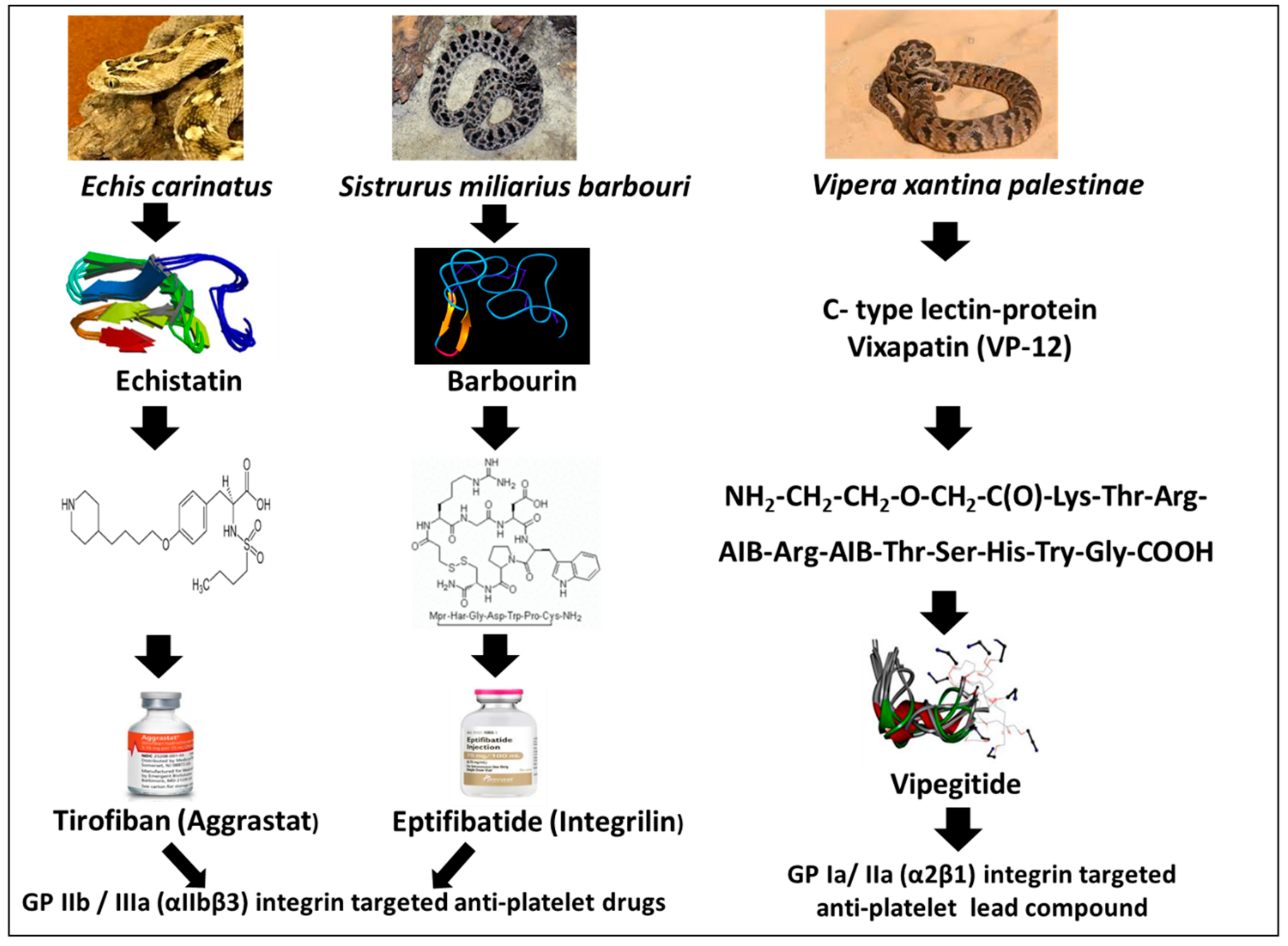
COBRA VENOM PEPTIDEs
19 peptides ??
duckduckgo query: cobra venom peptides
https://duckduckgo.com/?q=COBRA+VENOM+PEPTIDES&t=h_&ia=web
duckduck go query: cobra venom 19 peptides
https://duckduckgo.com/?q=COBRA+VENOM+19+PEPTIDES&t=h_&ia=web
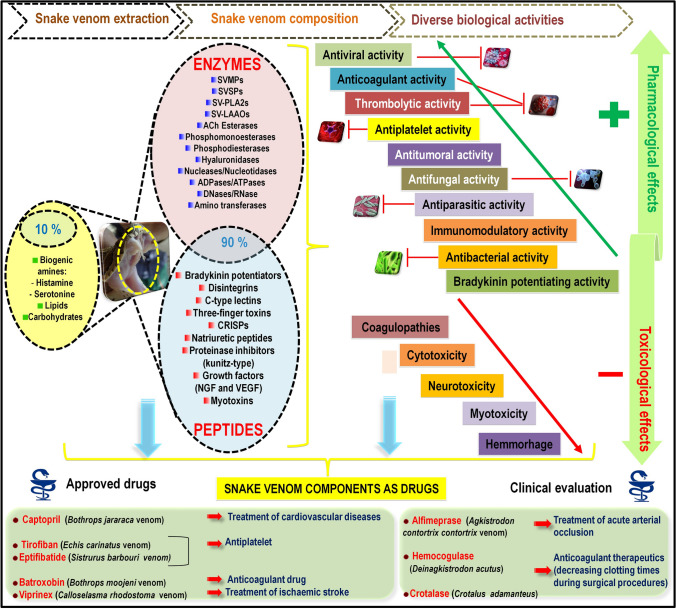
cobra venom peptides
Snake Venom Peptides: Tools of Biodiscovery
https://www.ncbi.nlm.nih.gov/pmc/articles/PMC6266942/
Nature endowed snakes with a lethal secretion known as venom, which has been fine-tuned over millions of years of evolution. Snakes utilize venom to subdue their prey and to survive in their natural habitat. Venom is known to be a very poisonous mixture, consisting of a variety of molecules, such as carbohydrates, nucleosides, amino acids, lipids, proteins and peptides. Proteins and peptides are the major constituents of the dry weight of snake venoms and are of main interest for scientific investigations as well as for various pharmacological applications. Snake venoms contain enzymatic and non-enzymatic proteins and peptides, which are grouped into different families based on their structure and function. Members of a single family display significant similarities in their primary, secondary and tertiary structures, but in many cases have distinct pharmacological functions and different bioactivities. The functional specificity of peptides belonging to the same family can be attributed to subtle variations in their amino acid sequences. Currently, complementary tools and techniques are utilized to isolate and characterize the peptides, and study their potential applications as molecular probes, and possible templates for drug discovery and design investigations.
Non-lethal polypeptide components in cobra venom
https://pubmed.ncbi.nlm.nih.gov/17979735/
Snakes from several genera (mostly from Naja genus) belonging to the Elapidae family are usually named cobras. The effect of cobra bites is mainly neurotoxic. This is explained by the presence of highly potent alpha-neurotoxin in their venoms. The other two highly toxic components of cobra venoms are cytotoxins and phospholipases A(2). These three types of toxins constitute a major part of cobra venom. They have attracted the attention of researchers for many years and have been very well studied and thoroughly described. However cobra venoms contain also many other less abundant components which possess very low toxicity or even are not toxic at all. These components, mostly proteins, belong to different structural and functional types, and the reason for their presence in the venom is not always evident. Some of them are known for many years (e.g., nerve growth factor and cobra venom factor); others (e.g., cysteine rich secretory proteins, CRISPs) were discovered only recently. There are non-lethal proteins with unique biological activities that can be used as biochemical tools, while others may be regarded as potential leads for drug design. This review is the first attempt to systemize the available data on non-lethal components of cobra venom.
Codon usage analysis shows kraits and king cobras share greatest genetic similarities with SARS-CoV-2… were venom peptides engineered into the virus payload?
Biomedical applications of snake venom: from basic science to autoimmunity and rheumatology
https://www.sciencedirect.com/science/article/pii/S2589909020300435
Snake venoms have components with diverse biological actions that are extensively studied to identify elements that may be useful in biomedical sciences. In the field of autoimmunity and rheumatology, various findings useful for the study of diseases and potential drug development have been reported. The study of disintegrins, proteins that block the action of integrins, has been useful for the development of antiplatelet agents and principles for the development of immunosuppressants and antineoplastics. Several proteins in snake venoms act on the coagulation cascade, activating factors that have allowed the development of tests for the study of coagulation, including Russell’s viper venom time, which is useful in the diagnosis of antiphospholipid syndrome. Neurotoxins with either pre- or postsynaptic effects have been used to study neurogenic synapses and neuromuscular plaques and the development of analgesics, muscle relaxants and drugs for neurodegenerative diseases. Various components act by inhibiting cells and proteins of the immune system, which will allow the development of anti-inflammatory and immunosuppressive drugs. This review summarizes the usefulness of the components of snake venoms in the fields of autoimmunity and rheumatology, which can serve as a basis for diverse translational research.
WHAT IS A CODON ?
https://www.genome.gov/genetics-glossary/Codon
A codon is a DNA or RNA sequence of three nucleotides (a trinucleotide) that forms a unit of genomic information encoding a particular amino acid or signaling the termination of protein synthesis (stop signals). There are 64 different codons: 61 specify amino acids and 3 are used as stop signals.
Codon is the name we give a stretch of the three nucleotides, you know, one of A, C, G, or T, three of which in a row, that code for a specific amino acid, and so the genetic code is made up of units called codons where you have three nucleotides that code for a specific amino acid next to another three nucleotides, another three nucleotides, and another three nucleotides. And the cellular machinery, again the ribosome, that comes through and reads that genetic code, plugs in the correct amino acid that corresponds to each of the triplet code that's in the codon.
Dr. Bryan Ardis releases huge allegations: The covid-19 virus, vaccines and some treatments are all derived from SNAKE VENOM
BOMBSHELL: Covid does NOT exist as a novel, isolated virus … proven in COURT by courageous Canadian
https://naturalnews.com/2021-08-11-covid-does-not-exist-novel-isolated-virus.html
Scientists find DNA sequence in SARS-CoV-2 that was patented by Moderna three years prior to the covid-19 scandal
The lab origins of SARS-CoV-2 are coming clearer after scientists discovered a strand of DNA on the spike protein that matches a sequence patented by Moderna three years prior to the covid-19 scandal. This unique Moderna DNA was first filed for patent on February 4, 2016. This patented DNA matches several letters of genetic code on the nucleotide and a genetic sequence on the unique furin cleavage site of the SARS-CoV-2 spike protein. This is the part of the coronavirus that readily infects human cells.
The likelihood that the code developed naturally is one in three trillion, according to the researchers who discovered the match. This is another piece of evidence showing that the forced experimentation on human populations for the past two years was planned in advance. Moderna is one of the vaccine makers that was given the green light to bypass traditional safety standards in biologics research, to replicate the highly-profitable spike protein in humans.
Moderna stood to capitalize on covid-19 long before a pandemic was declared
Prior to the World Health Organization declaring a “global pandemic,” Moderna had already prepared an mRNA vaccine with instructions for replicating the spike protein in human cells. If this wasn’t suspicious enough, now there is a new trail of evidence that the spike protein was engineered by Moderna several years prior and was technically used as a vector to carry out genetic experiments and vaccine experiments on human populations.
The RNA of SARS-CoV-2 contains approximately 30,000 letters of genetic code. Nineteen letters of that genetic code are owned by Moderna. Twelve of the letters were discovered on the furin cleavage site and seven of the letters were found in the nucleotides nearby the furin cleavage site’s genome. SARS-CoV-2 is the first coronavirus to carry these 12 unique letters. These letters activate the furin enzyme, allowing the spike protein to readily spread to neighboring cells and infect humans.
Study shows mRNA in COVID-19 vaccines enter liver cells and alter human DNA
http://geneticlunacy.com/2022-05-05-mrna-in-vaccines-enter-cells-alter-dna.html
Scientific Study confirms Pfizer’s COVID Vaccine alters Human DNA
https://expose-news.com/2022/05/03/study-pfizer-covid-vaccine-alters-dna/
SARS–CoV–2 Spike Impairs DNA Damage Repair and Inhibits V(D)J Recombination In Vitro
https://www.mdpi.com/1999-4915/13/10/2056
Severe acute respiratory syndrome coronavirus 2 (SARS–CoV–2) has led to the coronavirus disease 2019 (COVID–19) pandemic, severely affecting public health and the global economy. Adaptive immunity plays a crucial role in fighting against SARS–CoV–2 infection and directly influences the clinical outcomes of patients. Clinical studies have indicated that patients with severe COVID–19 exhibit delayed and weak adaptive immune responses; however, the mechanism by which SARS–CoV–2 impedes adaptive immunity remains unclear. Here, by using an in vitro cell line, we report that the SARS–CoV–2 spike protein significantly inhibits DNA damage repair, which is required for effective V(D)J recombination in adaptive immunity. Mechanistically, we found that the spike protein localizes in the nucleus and inhibits DNA damage repair by impeding key DNA repair protein BRCA1 and 53BP1 recruitment to the damage site. Our findings reveal a potential molecular mechanism by which the spike protein might impede adaptive immunity and underscore the potential side effects of full-length spike-based vaccines.
BOMBSHELL: HHS documents admit the CDC has never isolated any “covid-19 virus” … PCR tests nothing but instrument NOISE … the global HOAX is rapidly unraveling
I’ll share that story here, but in short, common cold viruses and monkey virus fragments found in flu shots are being mislabeled “covid,” and there is a weaponized spike protein bioweapon that’s being distributed via vaccine injections. That’s all real. But there’s no such thing as a real, physical, isolated covid-19 virus that has been harvested from sick people and shown to infect other people and make them sick. What we’re really witnessing here, it now seems, is three distinct things:
1) A cocktail of common cold viruses labeled “covid” which are circulating and causing sickness in some people, most likely because of the lack of immune system exposure to wild type viruses during all the global lockdowns.
2) A weaponized spike protein toxic nanoparticle that’s being injected into people as a “clot shot” … and it’s likely shedding, causing harmful side effects in other, unvaccinated people.
3) A wholly fraudulent PCR “casedemic” scheme that’s designed to flag almost anyone as “positive” based almost entirely on how many cycles the PCR sample prep instruments are instructed to carry out, thereby amplifying instrument noise to the point of a “positive” hit. Almost anything can be flagged as “positive,” including genetic material fragments from previous years’ flu shots.
These three things — combined with the media’s mass hysteria programming — have achieved a level of global fear and psychological terrorism that the world has never seen before. But it’s all based on lies, it turns out. And here’s how we know.
No certified reference materials for isolated SARS-CoV-2 “covid-19” virus
As a lab owner, published scientist and mass spec analyst myself, I am extremely familiar with the process of using certified reference materials (CRMs) to validate analysis methods and instrument calibration sequences. (I’ve spent far too many evenings creating serial dilutions of standards using a Gilson pipette, trust me…)
Here’s how the process normally works in a legitimate science lab:
Step 1) Acquire the CRM of the thing you want to test (“analyte”). This means acquiring a purified, isolated standard with a known concentration, usually in a carrier such as water, or as a dry powder. For example, when I’m testing for mercury in food, I have a certified mercury standard with a known concentration of mercury, dissolved in water, nitric acid and hydrochloric acid.
Step 2) Run the CRM as a sample, at different concentrations, to build a “curve” that effectively teaches the instrument what the analyte looks like and how the instrument detector responds to different concentrations of the analyte. The end result is a “quant curve” that will be used in step 3.
NOTE: Instruments will “match” the thing you’re looking for by a variety of methods, filtering out all other things that don’t match. In mass spec work, molecules are identified by their molecular mass, ion fragmentation patterns, and elution time on chromatography columns. For a substance to match, it has to hit all these parameters. In PCR testing, a “match” is a genomic sequence made of base pairs, defined in a digital library that may or may not have ever been run against a real, physical standard in the real world.
Step 3) Run unknown samples through the instrument (of blood serum, urine, saliva, water, food sample extracts, etc.) and see if the unknown sample contains any of the thing you were looking for (the analyte). Because you built a quant curve, you can also then determine the concentration of the analyte in the original sample. This is typically described as mass over volume, such as ng / ml (nanograms per milliliter). A nanogram is a billionth of a gram. When we test foods for glyphosate, we can detect as little as 1 nanogram per milliliter, which tells you something about the extreme sensitivity of high-end instruments.
This is the process to test something and identify how much of something is found in something else. For example, if you were going to determine if someone was sick with “covid,” you would need to determine the concentration of covid-19 viruses in their blood (i.e. the “viral load”). This is science / biology 101.
So what’s the problem, then?
You’d be stunned to realize how deep the science fraud really goes. Consider these critical points:
Point #1: There appear to be no isolated, purified Certified Reference Materials available for SARS-CoV-2 “covid”. I’ve seen companies that claim to be selling “isolates” containing covid viruses, but in their own description, they explain that their vials contain genetic material from “host cells” (human cells) as well as bovine serum cells, which means it’s a cocktail stew of who-knows-what. Yet it’s called an “isolate.”
Case in point: BEI Resources, which offers something they call an “isolate” of covid-19, that you can find at this link. As the description states for this covid-19 “isolate:”
…[T]his product is not suitable as a whole cell antigen preparation because the protein content is largely contributed by the host cell and the fetal bovine serum used during virus propagation.
In other words, most of the genetic material in the “isolate” is actually from human cells. So it’s not an isolate at all. The covid virus isn’t isolated. In fact, this “isolate” contains viral genetic material, human genetic material and bovine genetic material, plus whatever other viruses were present in the blood of the people and the cows. This could be millions of different nanoparticles present, each containing their own sequences of genetic material.
Point #2: If you have no isolated, certified reference materials, you can’t develop a legitimate analysis test. And this is exactly what the FDA admits in its own documents, which state that since covid-19 viruses weren’t available for the development of the PCR test, they “simulated” it by using human cells and gene bank coronavirus fragments. From the FDA’s own document:
Since no quantified virus isolates of the 2019-nCoV were available for CDC use at the time the test was developed and this study conducted, assays designed for detection of the 2019-nCoV RNA were tested with characterized stocks of in vitro transcribed full length RNA … spiked into a diluent consisting of a suspension of human A549 cells and viral transport medium (VTM) to mimic clinical specimen.
In other words, they faked the covid virus by using gene bank cells which were deliberately and falsely labeled “covid.” This is how the PCR test was developed. The FDA admits it all. The PCR test is a fraud.
Point #3: If you don’t have a CRM isolate, you can’t calibrate instruments against a known sample. And this means the PCR tests aren’t being calibrated against anything real and physical. Instead, they’re relying on downloaded digital libraries provided by none of than the CDC, the very same Big Pharma front group that’s spearheading this covid scam.
Point #4: PCR instruments are incapable of quantitative analysis.The “positive” hits are nothing but amplified background noise. No PCR instrument can tell you how much of some genetic material was found in an original sample. It can merely detect the presence of material on a yes / no basis. In lab science, this is called a “qualitative” analysis, not a quantitative analysis.
Cross-species transmission of the newly identified coronavirus 2019-nCoV
https://onlinelibrary.wiley.com/doi/full/10.1002/jmv.25682
The current outbreak of viral pneumonia in the city of Wuhan, China, was caused by a novel coronavirus designated 2019-nCoV by the World Health Organization, as determined by sequencing the viral RNA genome. Many initial patients were exposed to wildlife animals at the Huanan seafood wholesale market, where poultry, snake, bats, and other farm animals were also sold. To investigate possible virus reservoir, we have carried out comprehensive sequence analysis and comparison in conjunction with relative synonymous codon usage (RSCU) bias among different animal species based on the 2019-nCoV sequence. Results obtained from our analyses suggest that the 2019-nCoV may appear to be a recombinant virus between the bat coronavirus and an origin-unknown coronavirus. The recombination may occurred within the viral spike glycoprotein, which recognizes a cell surface receptor. Additionally, our findings suggest that 2019-nCoV has most similar genetic information with bat coronovirus and most similar codon usage bias with snake. Taken together, our results suggest that homologous recombination may occur and contribute to the 2019-nCoV cross-species transmission.
Brazillian Viper Snake Venom Could Help Find a Cure to Covid-19 Virus
Brazilian researchers have found that a molecule in the venom of a type of snake inhibited coronavirus reproduction in monkey cells, a possible first step toward a drug to combat the virus causing COVID-19.
A study published in the scientific journal Molecules this month found that the molecule produced by the jararacussu pit viper inhibited the virus’s ability to multiply in monkey cells by 75%.
“We were able to show this component of snake venom was able to inhibit a very important protein from the virus,” said Rafael Guido, a University of Sao Paulo professor and an author of the study.
The molecule is a peptide, or chain of amino acids, that can connect to an enzyme of the coronavirus called PLPro, which is vital to reproduction of the virus, without hurting other cells.
Already known for its antibacterial qualities, the peptide can be synthesized in the laboratory, Guido said in an interview, making the capture or raising of the snakes unnecessary.
“We’re wary about people going out to hunt the jararacussu around Brazil, thinking they’re going to save the world … That’s not it!” said Giuseppe Puorto, a herpetologist running the Butantan Institute’s biological collection in Sao Paulo. “It’s not the venom itself that will cure the coronavirus.”
Researchers will next evaluate the efficiency of different doses of the molecule and whether it is able to prevent the virus from entering cells in the first place, according to a statement from the State University of Sao Paulo (Unesp), which was also involved in the research.
They hope to test the substance in human cells but gave no timeline.
WHAT ARE PEPTIDES ?
https://www.webmd.com/a-to-z-guides/what-are-peptides
What Are Peptides?
Your body makes peptides. They're strings of amino acids, which are the "building blocks" of proteins. But a peptide doesn't have as many amino acids as a protein does.
Lab-made peptides can mimic some of those found in your body. Some of them are used in medications for conditions ranging from diabetes to multiple sclerosis.
Studies have also found that certain types may have benefits for your skin, muscles, and maybe your weight. So companies are putting them into skin products and dietary supplements you can buy over the counter.
Keep in mind that the FDA doesn't regulate cosmetics and supplements as strictly as drugs. So use caution when buying and using peptide products.
What Do They Do?
There are lots of different peptides, each of which has a different role in your body. We need more research into what synthetic peptides can do and how they do it. But some of the benefits certain peptides are thought to offer include:
Anti-aging. Collagen peptides help make collagen and elastin, proteins found in healthy skin. An antimicrobial peptide (AMP) is involved in the production of melanin, a skin pigment. Another AMP is involved in skin whitening, so a synthetic version might help with hyperpigmentation or "age spots."
Improving the skin barrier. Antimicrobial peptides can help your body fight bacteria and promote wound healing.
Muscle growth. Creatine and collagen peptides help boost muscle growth or muscle repair. (Certain types of synthetic peptides thought to be linked to muscle growth, called growth hormone releasing peptides, may be illegal and unsafe.)
Weight loss. Scientists are looking at whether some peptides could help you lose weight. But we need more studies on this.
Peptides in Skin Care Products
Studies have shown that copper peptides can help your body make collagen and elastin. They also act as antioxidants, helping to repair damage to your skin. Other types of peptides can give your skin a boost, too. Just don't expect a major change -- the benefits are subtle.
You can find peptides in:
Lotions
Creams
Serums
Face masks
INN-toxin, a highly lethal peptide from the venom of Indian cobra (Naja naja) venom-Isolation, characterization and pharmacological actions
https://pubmed.ncbi.nlm.nih.gov/18760317/
Snake venomics of monocled cobra (Naja kaouthia) and investigation of human IgG response against venom toxins
https://pubmed.ncbi.nlm.nih.gov/25771242/
Improved method for the isolation, characterization and examination of neuromuscular and toxic properties of selected polypeptide fractions from the crude venom of the Taiwan cobra Naja naja atra
https://pubmed.ncbi.nlm.nih.gov/22677803/
Purification and Characterization of Nk-3FTx: A Three Finger Toxin from the Venom of North East Indian Monocled Cobra
https://pubmed.ncbi.nlm.nih.gov/26293154/
Development of alpha-neurotoxin antibodies in patients envenomed by the monocellate Thai cobra (Naja kaouthia)
https://pubmed.ncbi.nlm.nih.gov/7725334/
Sequencing and model structure of a Naja naja atra protein fragment
https://pubmed.ncbi.nlm.nih.gov/10917453/
Researchers Continue to Find Venom: Additional Evidence Confirms Snake Venom Peptides in Bioweapon

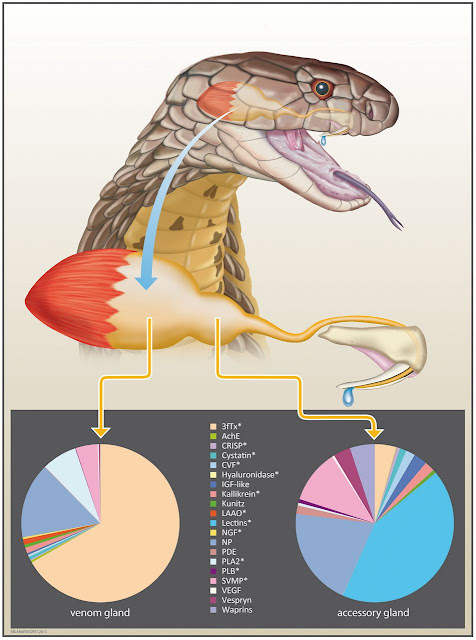

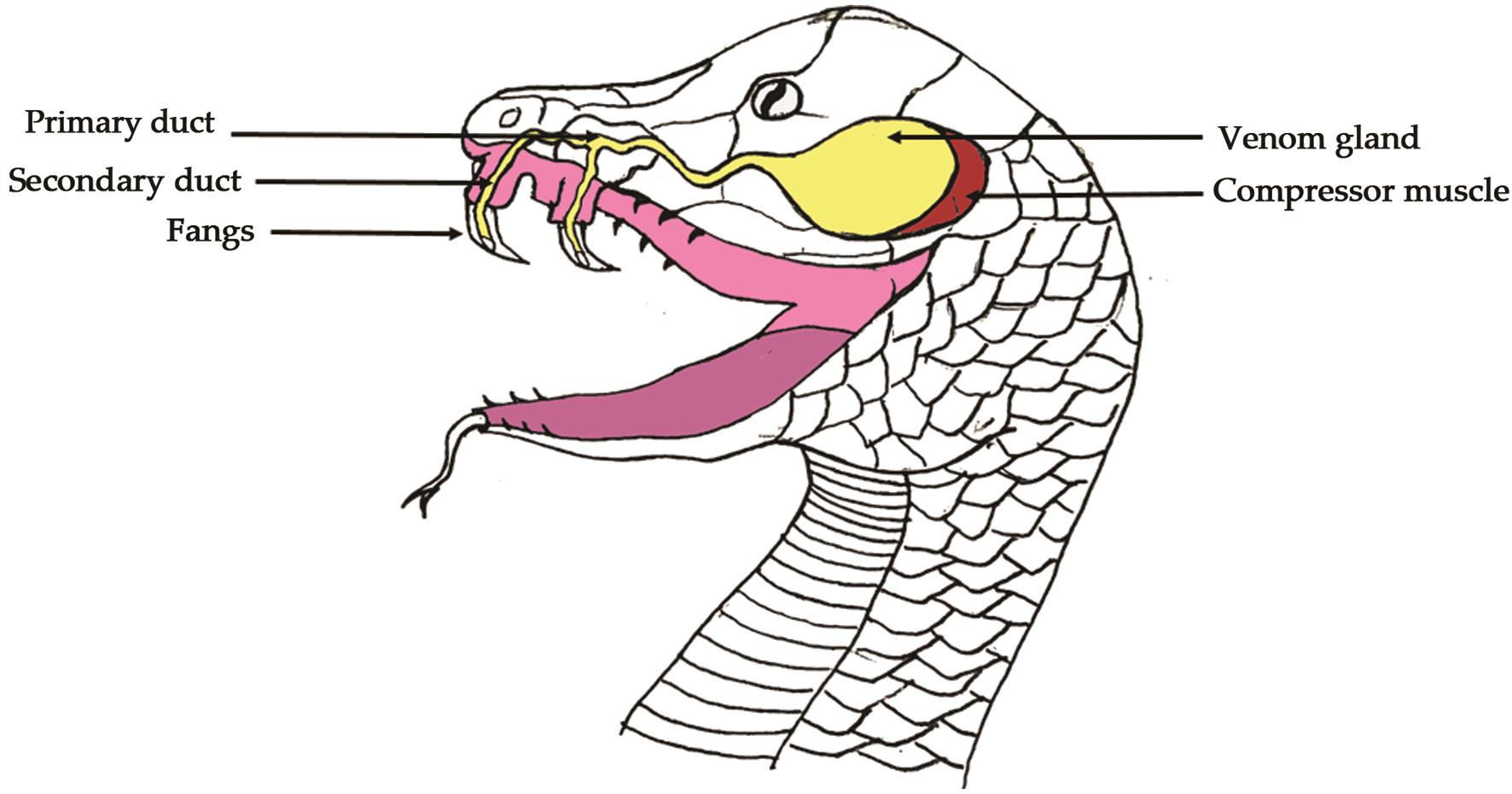
WHAT ARE SNAKE VENOM PEPTIDES ?
duckduckgo query: WHAT ARE SNAKE VENOM PEPTIDES ?
https://duckduckgo.com/?q=what+are+snake+venom+peptides+%3F&t=h_&ia=web
Snake Venom Peptides: Tools of Biodiscovery
https://pubmed.ncbi.nlm.nih.gov/30441876/
Nature endowed snakes with a lethal secretion known as venom, which has been fine-tuned over millions of years of evolution. Snakes utilize venom to subdue their prey and to survive in their natural habitat. Venom is known to be a very poisonous mixture, consisting of a variety of molecules, such as carbohydrates, nucleosides, amino acids, lipids, proteins and peptides. Proteins and peptides are the major constituents of the dry weight of snake venoms and are of main interest for scientific investigations as well as for various pharmacological applications. Snake venoms contain enzymatic and non-enzymatic proteins and peptides, which are grouped into different families based on their structure and function. Members of a single family display significant similarities in their primary, secondary and tertiary structures, but in many cases have distinct pharmacological functions and different bioactivities. The functional specificity of peptides belonging to the same family can be attributed to subtle variations in their amino acid sequences. Currently, complementary tools and techniques are utilized to isolate and characterize the peptides, and study their potential applications as molecular probes, and possible templates for drug discovery and design investigations
Snake venom toxins: toxicity and medicinal applications
https://pubmed.ncbi.nlm.nih.gov/27245678/
Snake venoms are complex mixtures of small molecules and peptides/proteins, and most of them display certain kinds of bioactivities. They include neurotoxic, cytotoxic, cardiotoxic, myotoxic, and many different enzymatic activities. Snake envenomation is a significant health issue as millions of snakebites are reported annually. A large number of people are injured and die due to snake venom poisoning. However, several fatal snake venom toxins have found potential uses as diagnostic tools, therapeutic agent, or drug leads. In this review, different non-enzymatically active snake venom toxins which have potential therapeutic properties such as antitumor, antimicrobial, anticoagulating, and analgesic activities will be discussed.
Snake Venom Peptides and Low Mass Proteins: Molecular Tools and Therapeutic Agents
https://pubmed.ncbi.nlm.nih.gov/27804880/
Snake venoms are natural sources of biologically active molecules that are able to act selectively and specifically on different cellular targets, modulating physiological functions. Thus, these mixtures, composed mainly of proteins and peptides, provide ample and challenging opportunities and a diversified molecular architecture to design and develop tools and agents of scientific and therapeutic interest. Among these components, peptides and small proteins play diverse roles in numerous physiological processes, exerting a wide range of pharmacological activities, such as antimicrobial, antihypertensive, analgesic, antitumor, analgesic, among others. The pharmaceutical and cosmetic industries have recognized the huge potential of these privileged frameworks and believe them to be a promising alternative to contemporary drugs. A number of natural or synthetic peptides from snake venoms have already found preclinical or clinical applications for the treatment of pain, hypertension, cardiovascular diseases and aging skin. A well-known example is captopril, whose natural peptide precursor was isolated from Bothrops jararaca snake venom, which is a peptide-based drug that inhibits the angiotensin-converting enzyme, producing an anti-hypertensive effect. The present review looks at the main peptides (natriuretic peptides, bradykinin-potentiating peptides and sarafotoxins) and low mass proteins (crotamine, disintegrins and three-Finger toxins) from snake venoms, as well as synthetic peptides inspired by them, describing their biochemical, structural and physiological features, as well as their applications as research tools and therapeutic agents.
Snake venom three-finger toxins and their potential in drug development targeting cardiovascular diseases
https://pubmed.ncbi.nlm.nih.gov/32579959/
Cardiovascular diseases such as coronary and peripheral artery diseases, venous thrombosis, stroke, hypertension, and heart failure are enormous burden to health and economy globally. Snake venoms have been the sources of discovery of successful therapeutics targeting cardiovascular diseases. For example, the first-in-class angiotensin-converting enzyme inhibitor captopril was designed largely based on bradykinin-potentiating peptides from Bothrops jararaca venom. In the recent years, sensitive and high throughput approaches drive discovery and cataloging of new snake venom toxins. As one of the largest class of snake venom toxin, there are now>700 sequences of three-finger toxins (3FTxs) available, many of which are yet to be studied. While the function of 3FTxs are normally associated with neurotoxicity, increasingly more 3FTxs have been characterized to have pharmacological effects on cardiovascular systems. Here we focus on this family of snake venom toxins and their potential in developing therapeutics against cardiovascular diseases.
Snake Venom Components: Tools and Cures to Target Cardiovascular Diseases
https://pubmed.ncbi.nlm.nih.gov/33921462/
Cardiovascular diseases (CVDs) are considered as a major cause of death worldwide. Therefore, identifying and developing therapeutic strategies to treat and reduce the prevalence of CVDs is a major medical challenge. Several drugs used for the treatment of CVDs, such as captopril, emerged from natural products, namely snake venoms. These venoms are complex mixtures of bioactive molecules, which, among other physiological networks, target the cardiovascular system, leading to them being considered in the development and design of new drugs. In this review, we describe some snake venom molecules targeting the cardiovascular system such as phospholipase A2 (PLA2), natriuretic peptides (NPs), bradykinin-potentiating peptides (BPPs), cysteine-rich secretory proteins (CRISPs), disintegrins, fibrinolytic enzymes, and three-finger toxins (3FTXs). In addition, their molecular targets, and mechanisms of action-vasorelaxation, inhibition of platelet aggregation, cardioprotective activities-are discussed. The dissection of their biological effects at the molecular scale give insights for the development of future snake venom-derived drugs
Cardiovascular-Active Venom Toxins: An Overview
https://pubmed.ncbi.nlm.nih.gov/26812904/
Animal venoms are a mixture of bioactive compounds produced as weapons and used primarily to immobilize and kill preys. As a result of the high potency and specificity for various physiological targets, many toxins from animal venoms have emerged as possible drugs for the medication of diverse disorders, including cardiovascular diseases. Captopril, which inhibits the angiotensin-converting enzyme (ACE), was the first successful venom-based drug and a notable example of rational drug design. Since captopril was developed, many studies have discovered novel bradykinin-potentiating peptides (BPPs) with actions on the cardiovascular system. Natriuretic peptides (NPs) have also been found in animal venoms and used as template to design new drugs with applications in cardiovascular diseases. Among the anti-arrhythmic peptides, GsMTx-4 was discovered to be a toxin that selectively inhibits the stretch-activated cation channels (SACs), which are involved in atrial fibrillation. The present review describes the main components isolated from animal venoms that act on the cardiovascular system and presents a brief summary of venomous animals and their venom apparatuses.
Animal toxins - Nature's evolutionary-refined toolkit for basic research and drug discovery
https://pubmed.ncbi.nlm.nih.gov/32535105/
Venomous animals have evolved toxins that interfere with specific components of their victim's core physiological systems, thereby causing biological dysfunction that aids in prey capture, defense against predators, or other roles such as intraspecific competition. Many animal lineages evolved venom systems independently, highlighting the success of this strategy. Over the course of evolution, toxins with exceptional specificity and high potency for their intended molecular targets have prevailed, making venoms an invaluable and almost inexhaustible source of bioactive molecules, some of which have found use as pharmacological tools, human therapeutics, and bioinsecticides. Current biomedically-focused research on venoms is directed towards their use in delineating the physiological role of toxin molecular targets such as ion channels and receptors, studying or treating human diseases, targeting vectors of human diseases, and treating microbial and parasitic infections. We provide examples of each of these areas of venom research, highlighting the potential that venom molecules hold for basic research and drug development.
Advances in venom peptide drug discovery: where are we at and where are we heading?
https://pubmed.ncbi.nlm.nih.gov/33914674/
Introduction: Animal venoms are a complex mixture of bioactive molecules that have evolved over millions of years for prey capture and defense from predators. Venom consists of many different types of molecules, with disulfide-rich peptides being a major component in most venoms. The study of these potent and highly selective molecules has led to the development of venom-derived drugs for diseases such as type 2 diabetes mellitus and chronic pain. As technologies have improved, more bioactive peptides have been discovered from venomous animals. Many of these molecules may have applications as tools for understanding normal and disease physiology, therapeutics, cosmetics or in agriculture.Areas covered: This article reviews venom-derived drugs approved by the FDA and venom-derived peptides currently in development. It discusses the challenges faced by venom-derived peptide drugs during drug development and the future for venom-derived peptides.Expert opinion: New techniques such as toxin driven discovery are expanding the pipeline of venom-derived peptides. There are many venom-derived peptides currently in preclinical and clinical trials that would have remained undiscovered using traditional approaches. A renewed focus on venoms, with advances in technology, will broaden the diversity of venom-derived peptide therapeutics and expand our knowledge of their molecular targets.
Venoms as a platform for human drugs: translating toxins into therapeutics
https://pubmed.ncbi.nlm.nih.gov/21939428/
Introduction: An extraordinarily diverse range of animals have evolved venoms for predation, defence, or competitor deterrence. The major components of most venoms are peptides and proteins that are often protease-resistant due to their disulfide-rich architectures. Some of these toxins have become valuable as pharmacological tools and/or therapeutics due to their extremely high specificity and potency for particular molecular targets. There are currently six FDA-approved drugs derived from venom peptides or proteins.
Areas covered: This article surveys the current pipeline of venom-derived therapeutics and critically examines the potential of peptide and protein drugs derived from venoms. Emerging trends are identified, including an increasing industry focus on disulfide-rich venom peptides and the use of a broader array of molecular targets in order to develop venom-based therapeutics for treating a wider range of clinical conditions.
Expert opinion: Key technical advances in combination with a renewed industry-wide focus on biologics have converged to provide a larger than ever pipeline of venom-derived therapeutics. Disulfide-rich venom peptides obviate some of the traditional disadvantages of therapeutic peptides and some may be suitable for oral administration. Moreover, some venom peptides can breach the blood brain barrier and translocate across cell membranes, which opens up the possibility of exploiting molecular targets not previously accessible to peptide drugs.
Venom peptides as therapeutics: advances, challenges and the future of venom-peptide discovery
https://pubmed.ncbi.nlm.nih.gov/28879805/
Animal venoms are complex chemical arsenals. Most venoms are rich in bioactive peptides with proven potential as research tools, drug leads and drugs. Areas covered: We review recent advances in venom-peptide discovery, particularly the adoption of combined transcriptomic/proteomic approaches for the exploration of venom composition. Expert commentary: Advances in transcriptomics and proteomics have dramatically altered the manner and rate of venom-peptide discovery. The increasing trend towards a toxin-driven approach, as opposed to traditional target-based screening of venoms, is likely to expedite the discovery of venom-peptides with novel structures and new and unanticipated mechanisms of action. At the same time, these advances will drive the development of higher-throughput approaches for target identification. Taken together, these approaches should enhance our understanding of the natural ecological function of venom peptides and increase the rate of identification of novel venom-derived pharmacological tools, drug leads and drugs.
Peptide therapeutics from venom: Current status and potential
https://pubmed.ncbi.nlm.nih.gov/28988749/
Peptides are recognized as being highly selective, potent and relatively safe as potential therapeutics. Peptides isolated from the venom of different animals satisfy most of these criteria with the possible exception of safety, but when isolated as single compounds and used at appropriate concentrations, venom-derived peptides can become useful drugs. Although the number of venom-derived peptides that have successfully progressed to the clinic is currently limited, the prospects for venom-derived peptides look very optimistic. As proteomic and transcriptomic approaches continue to identify new sequences, the potential of venom-derived peptides to find applications as therapeutics, cosmetics and insecticides grows accordingly.
Pharmacology and therapeutic potential of venom peptides
https://pubmed.ncbi.nlm.nih.gov/32857993/
Venom Peptides: Improving Specificity in Cancer Therapy
https://pubmed.ncbi.nlm.nih.gov/28867164/
Venom peptides (VPs) exhibit high specificity and selectivity towards cancer cells, with effects on cell proliferation, invasion, migration, and angiogenesis, as well as modulating immune responses. Studying VPs can help the design of more specific peptide drugs for targeted cancer therapy.
Therapeutic peptides: current applications and future directions
https://pubmed.ncbi.nlm.nih.gov/35165272/